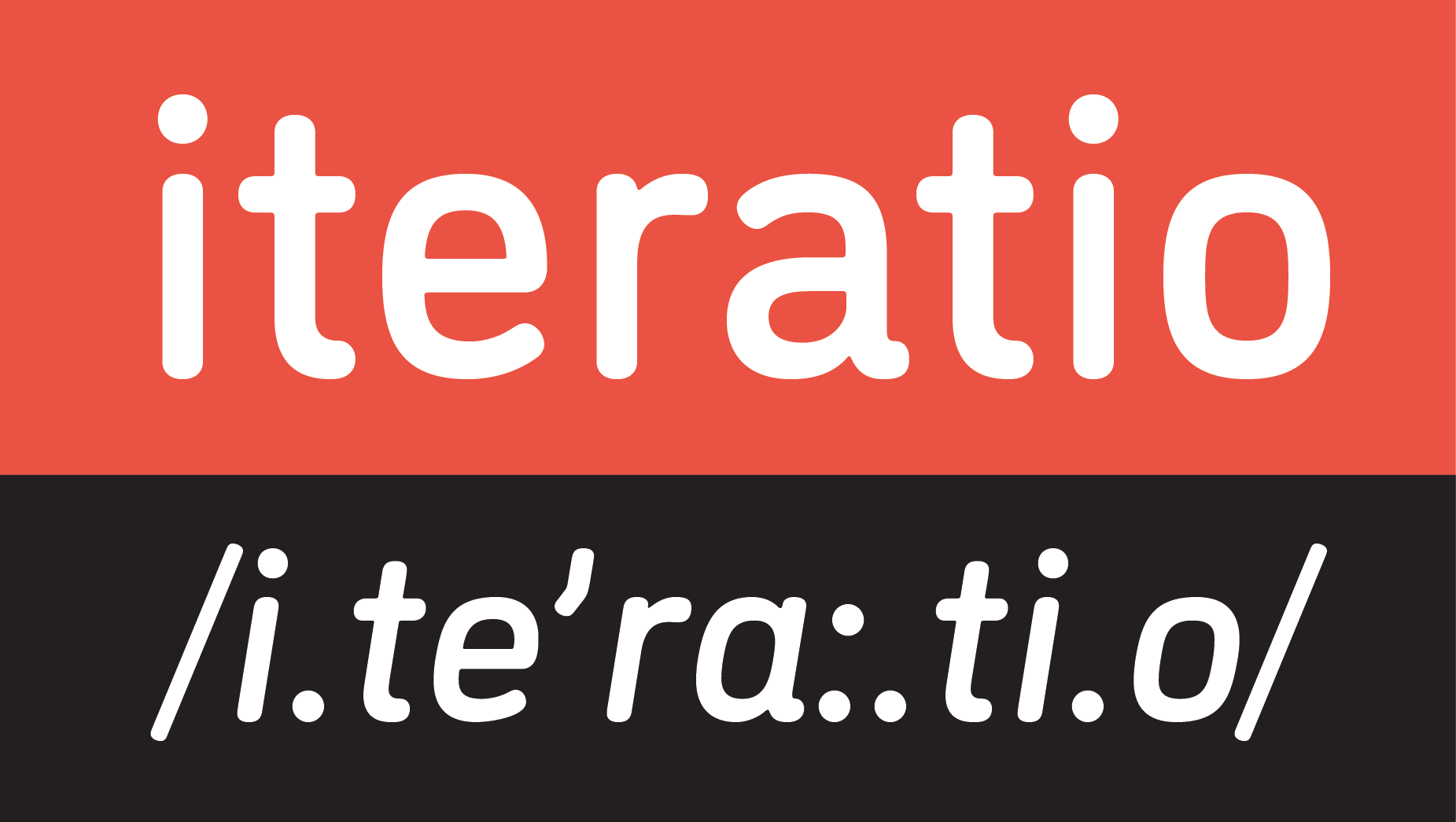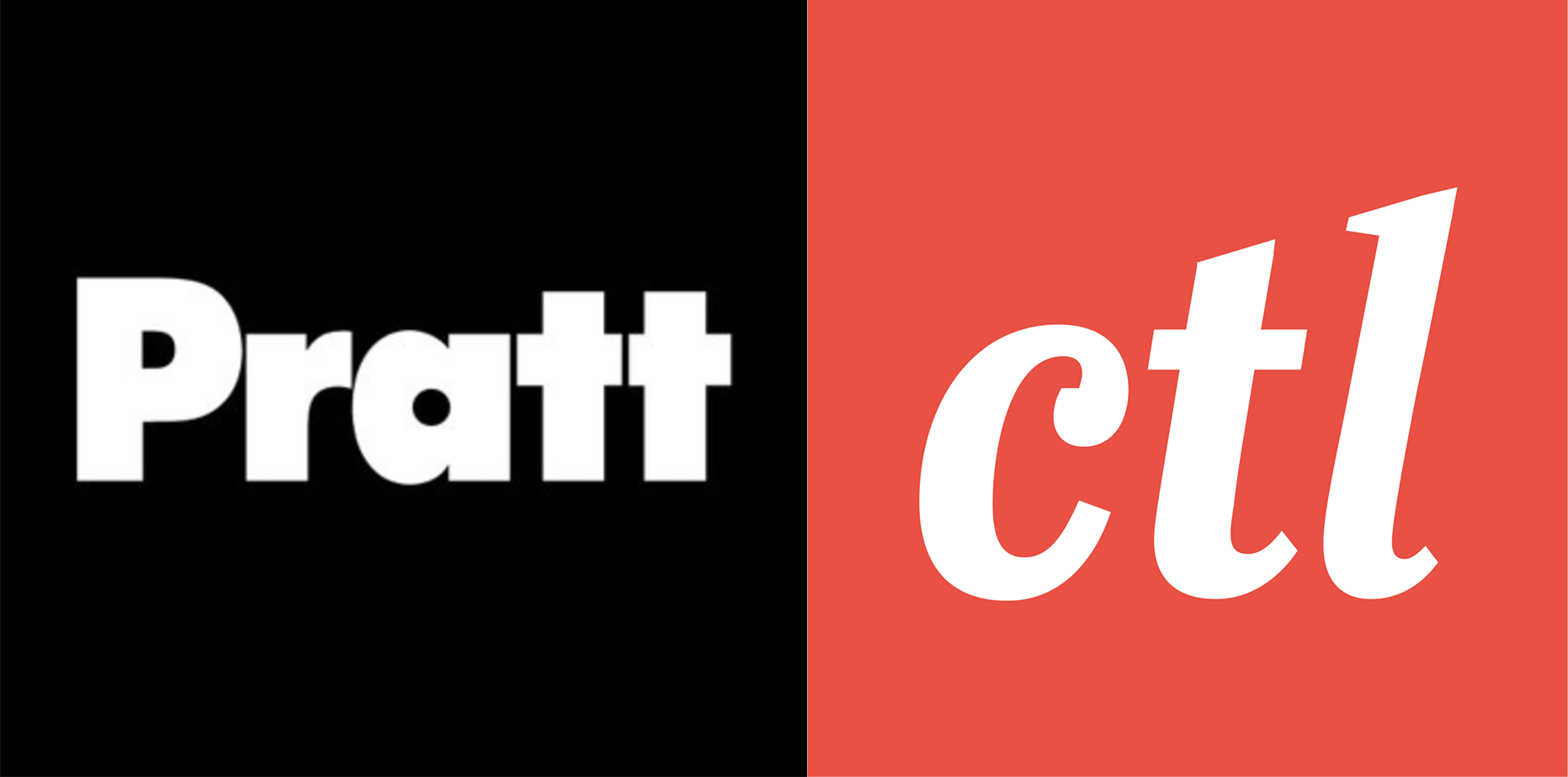The Air in the Studio is Filled with Feedback
Engaging in a shared “Gradeless” cohort offered me a chance to focus only on offering students feedback for learning. This dropped the burden of using grades. I do not use crits, a formal group sit-down reviewing everyone’s work methodically, but have elicited conversations about “noticing,” observing things about the work and asking where someone really innovated with the given assignment. Distinctions between subjective and objective observations are encouraged (if they can be identified by the student). Focusing on where and how course concepts are being used excitingly and where improvements can be made is the key goal for these pin-ups.
Collective conversations are gathering points in class sessions, but feedback conversations are happening throughout the workshop nature of the studio class time. I take open-air walks around the room, continuously observing, coaching, noticing aloud, making references to the collective conversations, helping students one on one publicly and in collaboration with peers. This makes use of many layers of the feedback process. A part of this process is reminding students to photograph their process frequently. Students are regularly asked to come over and see what this or that person has just done. (I purposefully do this with students whose work does not get attention, because in the public nature of the workshop, we are really learning from the diversity of sensibilities in the group.) Through this process, there is no way for students to think I am not giving them regular feedback all the time. It is part of the air of the studio classroom.
Studio makers have a hard time reflecting on their moment-by-moment achievements or where they have strayed from the goals of the assignment, because studio making is a complex, simultaneous, whirling storm of different kinds of activities. We easily become distracted, sidetracked, and sometimes these distractions lead to important discoveries. Sometimes these distractions represent a tendency to avoid hard things to do. That avoidance might translate to comfort, as those behaviors are tendencies learned before coming to college. There is nothing wrong with this. Learning is a challenge, as often it is a space of critical thinking and problem solving within an organized and outcome-based college course.
When students work on homework, they often are not pulled from their moment-by-moment worlds to stop, step back, rotate the work upside down, see it from across the room, look at someone else trying to do the same thing but in a totally different way that can baffle the student or offer infectious influence.
The workshop that includes moment-by-moment feedback models a way to work. Focus, move ahead, and then stop, step back, and reflect.
How can grading capture the dynamics of a feedback-centered workshop? Seemingly, the only possible way is to witness and reflect on the engagement and growth of the student, with consideration for how they internalize the course material and individually put it into motion. A grading system like A, B, C is grossly inefficient. Unless everyone gets an A for engagement, grading is outside of the air and atmosphere in the studio workshop.
A Language of Self-Reflection for the Workshop Learning Process
The required Foundation courses I teach have very large parts of them that will be completely new for first-year art and design college students. Many students begin Foundation at Pratt as fifth-year high school students. The shift in learning is often enormous. Many high school art or design courses are product driven where results of projects are pre-known and pre-exist. Students want me to show them an example of how the final work should look. If I taught a course based on this model, it would make sense to have an A–C grade system. But when teaching a visual-concept- and practice-based course where learning happens by doing individually within the shared collective community of the course, differences in learning re-create the learning material. No semester results in the same achievements because the learner changes the course.
Students in this environment go through the challenging process of learning a visual design principle by experimenting with its components and building upon earlier scaffolding learning components. They are asked to make use of new and previous things learned in new learning problems.
Students in this process commonly say, “I understand it but have a hard time applying it.” Because the air in the studio is filled with feedback, the door opens to a particular use of “Bloom’s Taxonomy” (Armstrong, 2010), making his “learning level vocabulary” concrete and practical and of the moment. The student making this statement (someone every year does so…) indicates that they have a minor crisis in learning. Understanding is one thing, but applying it is another. The student can seem stuck, unable to play, but most often seems to be reporting a gap in rationality and intuition or stating that something is out of reach. This is a minor event, but verbalizing it in class, among peers, helps others connect with the natural and necessary processes of not knowing. They may miss it now, but will grasp it later in a different context. My job is to help them connect not knowing with their intuition or later knowing. The whole course is founded on the spaces between understanding and applying. It is a verbal articulation about what is often nonverbal. Play can get the student to the next nonverbal question of “how do I make this mine?”
In Benjamin Bloom’s pyramid structure, there is a progressive rise expected, learning at its base the skills of Remembering and Understanding, growing more complex when Applying and Analyzing, and moving towards Evaluating and Creating. How I use this language is to condense or assume that with every learning component, students move from Understanding (assuming Remembering) to Applying (assuming Analyzing) into the areas of “Integrating” that include Evaluating, Synthesizing, and Creating. The latter refers to creating by employing the course concepts and practices to and through one’s own sensibilities. The use of "Integrating" is influenced by L. Dee Fink’s "Significant Learning Experiences," which was explored in the Pratt CTL Learning Community called the Broccoli Group, where the visuals were adapted. Integrating, like the terms Understanding and Applying, has a very hands-on nature and feels practical enough for students as they work and reflect on their process. The vocabulary reflects where students are with their learning process—“Understanding, Applying, Integrating” is a fairly quick review of how the student is doing while in the moment-by-moment workshop environment. In the Bloom structural model, we see learning that suggests a single direction—upwards. The single words are direct, useful, and practical for studio learning, but the progressive and ascending nature of the process is less pyramidical and more like monkey bars, with each learner needing to move in their own learning natures. Bloom’s levels of learning are great for self-reflection in conversation and feedback about growth and learning, but not for assessment in learning. What gets to a deeper and more panoramic self-reflection process is the daily use of a Process Book Record of collecting and reviewing working processes and products over time. It holds the potential for students and the teacher to watch or catch moments of developments and changes in learning.
![]()
Figure 2
Fink’s Diagram, Brooks Adaptation
![]()
Self-Reflection and Watching Growth
Weekly Shared & Individual Google-Slide Process Books and "Check-In" Processes
Rather than using the process of a middle of the semester review, known as a "Mid-Term" review, I have found using a quick "Check-In" conversation three times in the semester to be more useful for students to consider a shorter review of material. For those having particular difficulties, it helps them and me problem-solve their learning challenges. In the past, I have used several approaches to these check-ins. For the first check-in, I have used a one-page "3 Circle Identifier,'' or an even simpler "Plus & Question" method. For the second check-in, students make a "Before & After" comparison of works that, in their minds, reflect where and how they have grown using a course concept or practice. Each of these shown here are self-explanatory and make use of a linear weekly visual Process Book (PB) as a repository of student work. Students copy/paste their pages from the Shared PBs into their own individual Process Books. While the Shared PBs are helpful when showing digital work––steps and stages of working––they also help students step back from the actual work to see a record of the work collectively. It is in the Individual PB where students place these check-ins and meet with me to chat about: 1) their growth or need for improvement, and 2) their own comparisons and commentaries concerning the evidence they see and show about their growth. The Before & After Check-In is a conversation starter, but in their own semester-long Individual PB we can go back and forth in time together, watching moments where they can see and grasp their arrivals at levels of Integration, Applying, and Understanding. As a more objective viewer, I can help students see what is harder to see on their own. It is common that students have a challenge seeing their steps fairly, because they expect change to be big, and when it is not so, they tend to miss its significance. I provide a more generous spirit looking for growth, primarily because I know that practicing conceptual tasks does result in increased fluency. I watch for it and magnify its importance continuously!
In numerous instances, Winstone & Boud, in their article, "The Need to Disentangle Assessment and Feedback in Higher Education," present how summative assessment and grading are at odds with students benefiting from, and internalizing, feedback. In Henderson, et al. (2019), the authors define feedback as “processes where the learner makes sense of performance-relevant information to promote their learning” (p. 268). When students discuss letter grades, these authors find that students focus less on the feedback, which is the point of learning and is student centered as it is connected only with that student (Winstone & Boud, 2022).
Winstone & Boud (2022) have this to say about such reflective instruments as process books:
This is critical for how a classroom experience can funnel outwards to the wider world where course learning may integrate more fully, apply to new and unforeseen uses, and transfer to processes based on the learner's own paths and directions beyond school.
As suggested in this quote above, relating to confidence and self-concept and in Fink's circular visualization of learning under "Integration," where he sees the potential for connecting between "ideas, people and realms of life," (Fink, 2003, p.50), the Feedback process has greater correspondence between the problem-solving in course learning and the greater world beyond schools and institutions. The last memories of students in their learning environments should not be what grade they received. Their final impression of the course should be a guided self-reflection on their participation in learning, doing, making, trying, failing, trying again. It is essential for students to form an education journey so that they can feel accomplished within themselves and not from outside systems of validation, validation that explains nothing about them or their processes.
References
Armstrong, P. (2010). Bloom’s taxonomy. Vanderbilt University Center for Teaching. https://cft.vanderbilt.edu/guides-sub-pages/blooms-taxonomy/.
Fink, L. D. (2003). Creating significant learning experiences: An integrated approach to designing college courses. John Wiley & Sons, Inc.
Henderson, M., Molloy, E., Ajjawi, R., & Boud, D. (2019). Designing feedback for impact. In M. Henderson, R. Ajjawi, D. Boud, and E. Molloy (Eds.), The impact of feedback in higher education (pp. 267–285). Palgrave Macmillan. https://doi.org/10.1007/978-3-030-25112-3_1
Winstone, N. E., & Boud, D. (2022).
The need to disentangle assessment and feedback in higher education, Studies in Higher Education, 47(3), 656–667.
DOI: 10.1080/03075079.2020.1779687
Engaging in a shared “Gradeless” cohort offered me a chance to focus only on offering students feedback for learning. This dropped the burden of using grades. I do not use crits, a formal group sit-down reviewing everyone’s work methodically, but have elicited conversations about “noticing,” observing things about the work and asking where someone really innovated with the given assignment. Distinctions between subjective and objective observations are encouraged (if they can be identified by the student). Focusing on where and how course concepts are being used excitingly and where improvements can be made is the key goal for these pin-ups.
Collective conversations are gathering points in class sessions, but feedback conversations are happening throughout the workshop nature of the studio class time. I take open-air walks around the room, continuously observing, coaching, noticing aloud, making references to the collective conversations, helping students one on one publicly and in collaboration with peers. This makes use of many layers of the feedback process. A part of this process is reminding students to photograph their process frequently. Students are regularly asked to come over and see what this or that person has just done. (I purposefully do this with students whose work does not get attention, because in the public nature of the workshop, we are really learning from the diversity of sensibilities in the group.) Through this process, there is no way for students to think I am not giving them regular feedback all the time. It is part of the air of the studio classroom.
Studio makers have a hard time reflecting on their moment-by-moment achievements or where they have strayed from the goals of the assignment, because studio making is a complex, simultaneous, whirling storm of different kinds of activities. We easily become distracted, sidetracked, and sometimes these distractions lead to important discoveries. Sometimes these distractions represent a tendency to avoid hard things to do. That avoidance might translate to comfort, as those behaviors are tendencies learned before coming to college. There is nothing wrong with this. Learning is a challenge, as often it is a space of critical thinking and problem solving within an organized and outcome-based college course.
When students work on homework, they often are not pulled from their moment-by-moment worlds to stop, step back, rotate the work upside down, see it from across the room, look at someone else trying to do the same thing but in a totally different way that can baffle the student or offer infectious influence.
The workshop that includes moment-by-moment feedback models a way to work. Focus, move ahead, and then stop, step back, and reflect.
How can grading capture the dynamics of a feedback-centered workshop? Seemingly, the only possible way is to witness and reflect on the engagement and growth of the student, with consideration for how they internalize the course material and individually put it into motion. A grading system like A, B, C is grossly inefficient. Unless everyone gets an A for engagement, grading is outside of the air and atmosphere in the studio workshop.
A Language of Self-Reflection for the Workshop Learning Process
The required Foundation courses I teach have very large parts of them that will be completely new for first-year art and design college students. Many students begin Foundation at Pratt as fifth-year high school students. The shift in learning is often enormous. Many high school art or design courses are product driven where results of projects are pre-known and pre-exist. Students want me to show them an example of how the final work should look. If I taught a course based on this model, it would make sense to have an A–C grade system. But when teaching a visual-concept- and practice-based course where learning happens by doing individually within the shared collective community of the course, differences in learning re-create the learning material. No semester results in the same achievements because the learner changes the course.
Students in this environment go through the challenging process of learning a visual design principle by experimenting with its components and building upon earlier scaffolding learning components. They are asked to make use of new and previous things learned in new learning problems.
Students in this process commonly say, “I understand it but have a hard time applying it.” Because the air in the studio is filled with feedback, the door opens to a particular use of “Bloom’s Taxonomy” (Armstrong, 2010), making his “learning level vocabulary” concrete and practical and of the moment. The student making this statement (someone every year does so…) indicates that they have a minor crisis in learning. Understanding is one thing, but applying it is another. The student can seem stuck, unable to play, but most often seems to be reporting a gap in rationality and intuition or stating that something is out of reach. This is a minor event, but verbalizing it in class, among peers, helps others connect with the natural and necessary processes of not knowing. They may miss it now, but will grasp it later in a different context. My job is to help them connect not knowing with their intuition or later knowing. The whole course is founded on the spaces between understanding and applying. It is a verbal articulation about what is often nonverbal. Play can get the student to the next nonverbal question of “how do I make this mine?”
In Benjamin Bloom’s pyramid structure, there is a progressive rise expected, learning at its base the skills of Remembering and Understanding, growing more complex when Applying and Analyzing, and moving towards Evaluating and Creating. How I use this language is to condense or assume that with every learning component, students move from Understanding (assuming Remembering) to Applying (assuming Analyzing) into the areas of “Integrating” that include Evaluating, Synthesizing, and Creating. The latter refers to creating by employing the course concepts and practices to and through one’s own sensibilities. The use of "Integrating" is influenced by L. Dee Fink’s "Significant Learning Experiences," which was explored in the Pratt CTL Learning Community called the Broccoli Group, where the visuals were adapted. Integrating, like the terms Understanding and Applying, has a very hands-on nature and feels practical enough for students as they work and reflect on their process. The vocabulary reflects where students are with their learning process—“Understanding, Applying, Integrating” is a fairly quick review of how the student is doing while in the moment-by-moment workshop environment. In the Bloom structural model, we see learning that suggests a single direction—upwards. The single words are direct, useful, and practical for studio learning, but the progressive and ascending nature of the process is less pyramidical and more like monkey bars, with each learner needing to move in their own learning natures. Bloom’s levels of learning are great for self-reflection in conversation and feedback about growth and learning, but not for assessment in learning. What gets to a deeper and more panoramic self-reflection process is the daily use of a Process Book Record of collecting and reviewing working processes and products over time. It holds the potential for students and the teacher to watch or catch moments of developments and changes in learning.
Figure 1
Bloom’s Taxonomy
Bloom’s Taxonomy

Figure 2
Fink’s Diagram, Brooks Adaptation

Self-Reflection and Watching Growth
Weekly Shared & Individual Google-Slide Process Books and "Check-In" Processes
Rather than using the process of a middle of the semester review, known as a "Mid-Term" review, I have found using a quick "Check-In" conversation three times in the semester to be more useful for students to consider a shorter review of material. For those having particular difficulties, it helps them and me problem-solve their learning challenges. In the past, I have used several approaches to these check-ins. For the first check-in, I have used a one-page "3 Circle Identifier,'' or an even simpler "Plus & Question" method. For the second check-in, students make a "Before & After" comparison of works that, in their minds, reflect where and how they have grown using a course concept or practice. Each of these shown here are self-explanatory and make use of a linear weekly visual Process Book (PB) as a repository of student work. Students copy/paste their pages from the Shared PBs into their own individual Process Books. While the Shared PBs are helpful when showing digital work––steps and stages of working––they also help students step back from the actual work to see a record of the work collectively. It is in the Individual PB where students place these check-ins and meet with me to chat about: 1) their growth or need for improvement, and 2) their own comparisons and commentaries concerning the evidence they see and show about their growth. The Before & After Check-In is a conversation starter, but in their own semester-long Individual PB we can go back and forth in time together, watching moments where they can see and grasp their arrivals at levels of Integration, Applying, and Understanding. As a more objective viewer, I can help students see what is harder to see on their own. It is common that students have a challenge seeing their steps fairly, because they expect change to be big, and when it is not so, they tend to miss its significance. I provide a more generous spirit looking for growth, primarily because I know that practicing conceptual tasks does result in increased fluency. I watch for it and magnify its importance continuously!
Figure 3
Plus & Question Reflection
![]()
Plus & Question Reflection
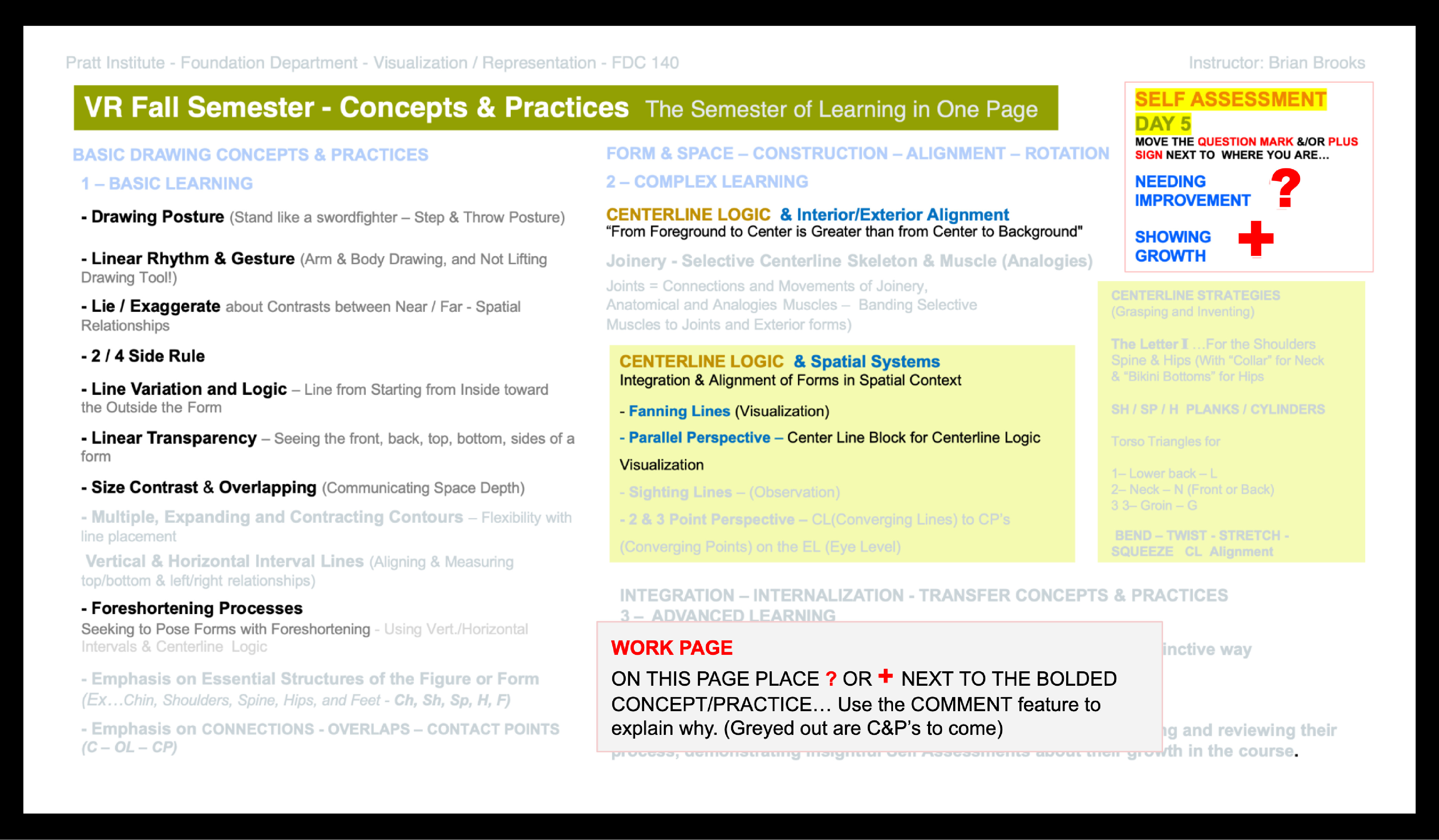
Figure 4
Circle Reflections
![]()
Figure 5
Before & After Reflection 1
![]()
Figure 6
Before & After Reflection 2
![]()
Figure 7
Before & After Reflection 3
![]()
Figure 8
Before & After Reflection 5
![]()
Figure 9
Before & After Reflection 6
![]()
Figure 10
Before & After Reflection 7
![]()
Figure 11
Before & After Reflection 8
![]()
Figure 12
Before & After Reflection 9
![]()
Figure 13
Before & After Reflection 10
![]()
Feedback on Growth and Improvement is “Student Centered” / Numbers or Letter Grades are “Institution Centered”Circle Reflections

Figure 5
Before & After Reflection 1
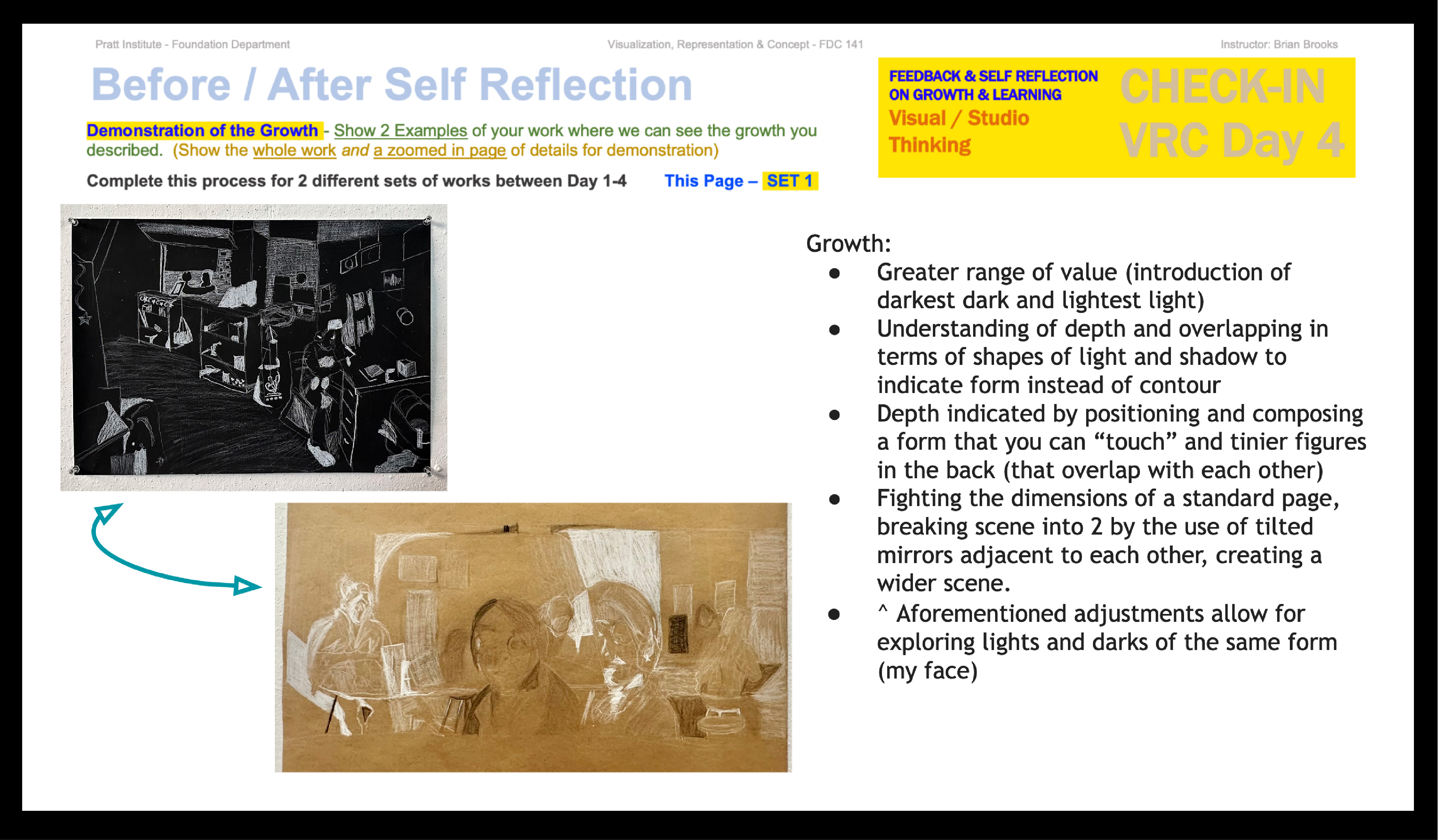
Figure 6
Before & After Reflection 2

Figure 7
Before & After Reflection 3

Figure 8
Before & After Reflection 5

Figure 9
Before & After Reflection 6

Figure 10
Before & After Reflection 7

Figure 11
Before & After Reflection 8

Figure 12
Before & After Reflection 9

Figure 13
Before & After Reflection 10
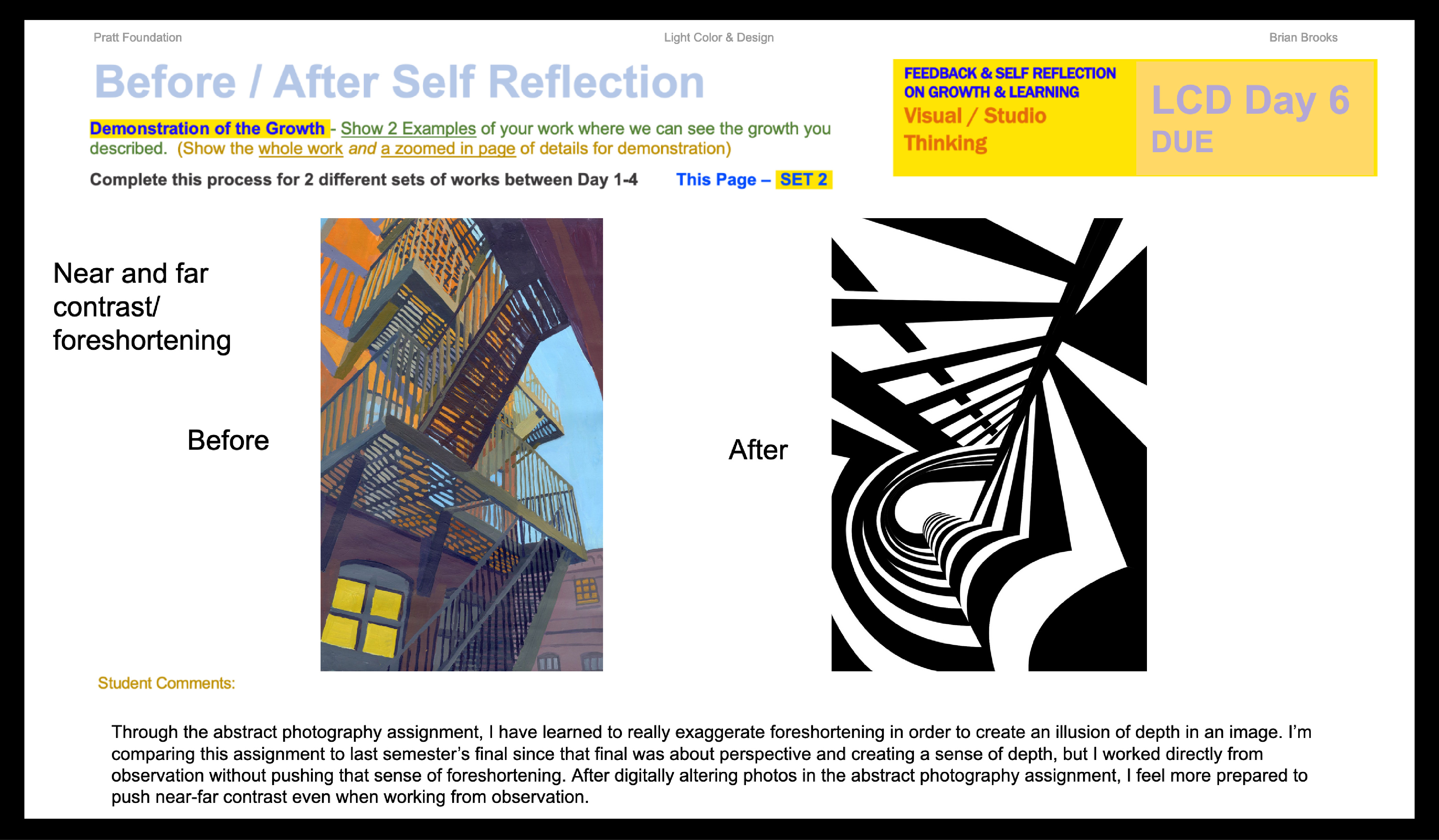
In numerous instances, Winstone & Boud, in their article, "The Need to Disentangle Assessment and Feedback in Higher Education," present how summative assessment and grading are at odds with students benefiting from, and internalizing, feedback. In Henderson, et al. (2019), the authors define feedback as “processes where the learner makes sense of performance-relevant information to promote their learning” (p. 268). When students discuss letter grades, these authors find that students focus less on the feedback, which is the point of learning and is student centered as it is connected only with that student (Winstone & Boud, 2022).
Winstone & Boud (2022) have this to say about such reflective instruments as process books:
Ongoing curation of feedback is also important to position the purpose of feedback as more than just improvement in numerical performance. Tracking the impact of feedback could enable students to recognize the influence of feedback processes on key outcomes such as confidence, skills, self-concept, and employability. (p. 665)
This is critical for how a classroom experience can funnel outwards to the wider world where course learning may integrate more fully, apply to new and unforeseen uses, and transfer to processes based on the learner's own paths and directions beyond school.
As suggested in this quote above, relating to confidence and self-concept and in Fink's circular visualization of learning under "Integration," where he sees the potential for connecting between "ideas, people and realms of life," (Fink, 2003, p.50), the Feedback process has greater correspondence between the problem-solving in course learning and the greater world beyond schools and institutions. The last memories of students in their learning environments should not be what grade they received. Their final impression of the course should be a guided self-reflection on their participation in learning, doing, making, trying, failing, trying again. It is essential for students to form an education journey so that they can feel accomplished within themselves and not from outside systems of validation, validation that explains nothing about them or their processes.
References
Armstrong, P. (2010). Bloom’s taxonomy. Vanderbilt University Center for Teaching. https://cft.vanderbilt.edu/guides-sub-pages/blooms-taxonomy/.
Fink, L. D. (2003). Creating significant learning experiences: An integrated approach to designing college courses. John Wiley & Sons, Inc.
Henderson, M., Molloy, E., Ajjawi, R., & Boud, D. (2019). Designing feedback for impact. In M. Henderson, R. Ajjawi, D. Boud, and E. Molloy (Eds.), The impact of feedback in higher education (pp. 267–285). Palgrave Macmillan. https://doi.org/10.1007/978-3-030-25112-3_1
Winstone, N. E., & Boud, D. (2022).
The need to disentangle assessment and feedback in higher education, Studies in Higher Education, 47(3), 656–667.
DOI: 10.1080/03075079.2020.1779687
